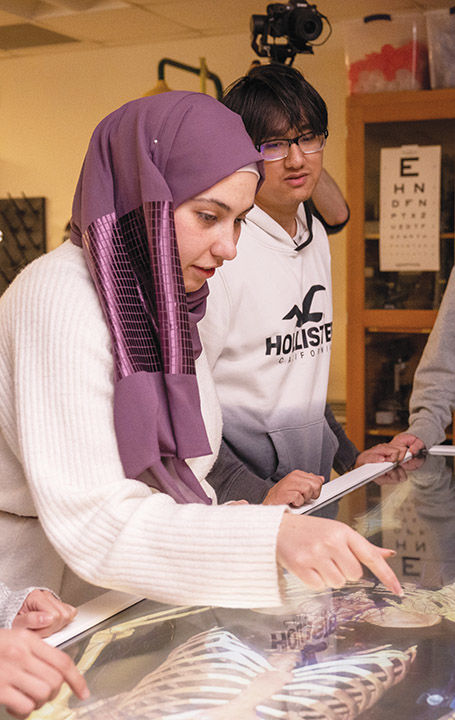Virtual dissection tables allow 3D exploration of cadavers, animal specimens
Cadaver dissection is a vital exercise for those planning careers in medicine and other health care fields, but it’s an experience that few undergraduate students get to have.
“Cadaver labs are hard to get and difficult to maintain,” said Dr. Todd Cook, associate professor of biology.
Now, Penn State Behrend students can gain experience in dissection without even getting gowned and gloved. Three new state-of-the-art Anatomage virtual dissection tables provide 3D renderings of digital cadavers, giving students the opportunity to digitally view, cut, and alter the orientation of the cadavers.
“These sophisticated teaching tools are found in many medical schools, but in few undergraduate institutions,” Cook said, “and we have three of them—a full-size table and two clinical tables.”
The tables allow students to see anatomy exactly as it would be on a fresh cadaver. Users can choose from four different photorealistic cadavers that were recreated from actual human cadavers through serial sectioning of the bodies at 0.2 mm intervals and then imaging the sections. The anatomy is presented as a fully interactive, life-sized touch screen experience.
“The tables allow for limitless exploration and learning as the virtual specimens can be dissected repeatedly,” Cook said. “They also allow us to isolate for study systems of the body, such as the circulatory, endocrine, skeletal, and lymphatic systems. And we can even download maladies for students to diagnose.”
The tables arrived over winter break and were quickly put to use in physiology and anatomy classes in the spring semester. They required little set up beyond plugging them in.
These virtual dissection tables aren’t just for learning by pre-health and nursing students, though. The smaller clinical tables include dozens of animal specimens in the same life-size, interactive format, which will be of use in many biology and science classes.
The Anatomage tables were made possible by a gift from the Orris C. Hirtzel and Beatrice Dewey Hirtzel Memorial Foundation.
